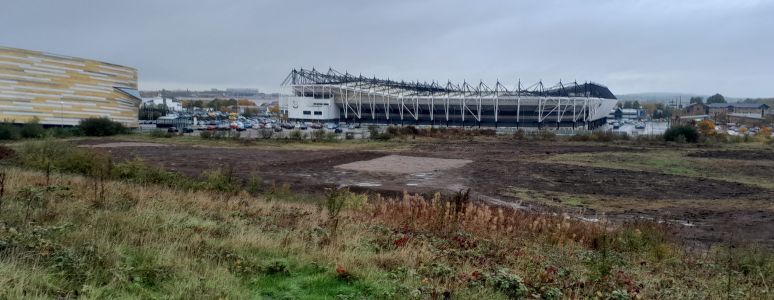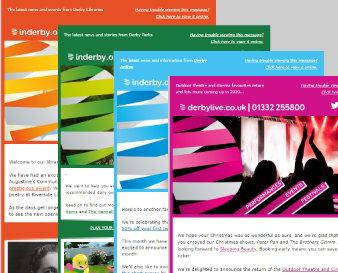New wetland haven created to protect vulnerable ground-nesting birds

Tue 21 Oct 2025
A significant new wetland area for ground-nesting birds has been created at a Derby nature reserve. The Sanctuary Bird and Wildlife Reserve, at Pride Park, is one of the city’s 10 designated Local Nature Reserves.
Derby City Council has worked closely with wildlife experts on the project, which has focused on the northern part of the reserve and the creation of a new wetland area for ground nesting birds, particularly waders, and primarily lapwing and little-ringed plovers.
The Sanctuary, established in 2004 on former industrial land, lies next to the River Derwent, which serves as a crucial corridor for dispersing bird life. The works, completed by specialist ecological and habitat contractors Cura Terrae and overseen by an independent ecologist, involved removing some scrub to create the open environment these birds need to breed successfully.
The new habitat features include:
- Lapwing plots of short vegetation and bare soil
- Plover gravels composed of shingle
- Permanent water pools
- Wader scrapes – shallow features with soft, muddy margins that hold water intermittently.
Attracting a wide variety of species like blackcap, sand martin, reed bunting, and skylark, the Sanctuary is already a mosaic of natural and man-made habitats, including a lake and gravel beds.
While the area itself is not open to the public, there are several viewing points, two with disabled access, all freely accessible from the Derby Arena car park, allowing visitors to watch the wildlife without causing disturbance.
Councillor Ndukwe Onuoha, Derby City Council Cabinet member for Streetpride, Parks and Leisure, said:
“This exciting habitat project demonstrates our commitment to biodiversity and the local environment, creating a unique habitat in the city that supports the recovery of beautiful and vulnerable ground-nesting birds. This investment in The Sanctuary ensures that Derby’s green spaces not only survive but actively thrive as crucial stopovers and breeding grounds for a wide range of birds.”
Nick Brown, formerly with Derbyshire Wildlife Trust, has been a regular visitor to the reserve over 20 years and assists the Council team that manages the site by sharing his expertise. He said:
"While scrub is an important habitat for many birds, the great value of this site has been the open areas where the vegetation is kept low, with shallow pools here and there. This habitat attracts wading birds such as lapwings and even the rare little ringed plover, a former breeding bird on the reserve.
“At migration time, birds such as wheatears, whinchats and even ring ouzels were recorded annually when the site was more open than it is now, so this project will definitely benefit these birds which stop over to feed during their migrations.”
Nick Moyes initiated the creation of The Sanctuary and has been a regular visitor to the reserve ever since, also lending his expertise to the project. He said: “The Sanctuary is one of Derby’s least known spaces for wildlife, yet its location close to the city centre, and its valuable habitats for many unusual visiting and breeding bird species, make this particular Local Nature Reserve one of the most important in the region. It’s fantastic to see Derby City Council is working to ensure it stays that way.”
Iain Weston, Head of Habitats at Cura Terrae, added: “Cura Terrae’s Habitats team were delighted to work with Derby City Council on this important project at The Sanctuary Bird and Wildlife Reserve. It’s a fantastic example of how collaborative, ecology-led habitat design and delivery can make a real difference for local biodiversity. It’s been a pleasure to contribute our habitat creation expertise to help enhance one of Derby’s most valuable natural spaces.”
Funding for the project was provided by the Our City, Our River scheme and Section 106 funding. Section 106 funding is financial contributions from developers to mitigate a new development's impact on the local area.
The Our City, Our River (OCOR) programme is a major flood prevention project being delivered by Derby City Council and the Environment Agency. Alongside physical flood defences, this scheme has also a number of community benefits covering leisure, heritage and the environment. Work on the latest phase, Derby Riverside, is now under way. You can read more about OCOR on the Derby City Council website.
Find out more information about birdwatching locally on The Derbyshire Ornithological Society’s website.
Visitors to Derby Arena and the Sanctuary Nature Reserve can park at Derby Arena for free for three hours – visitors should enter your car registration into the display screens inside the arena. Parking for more than three hours costs £3.

